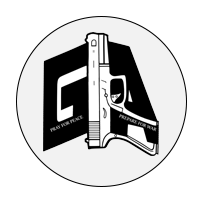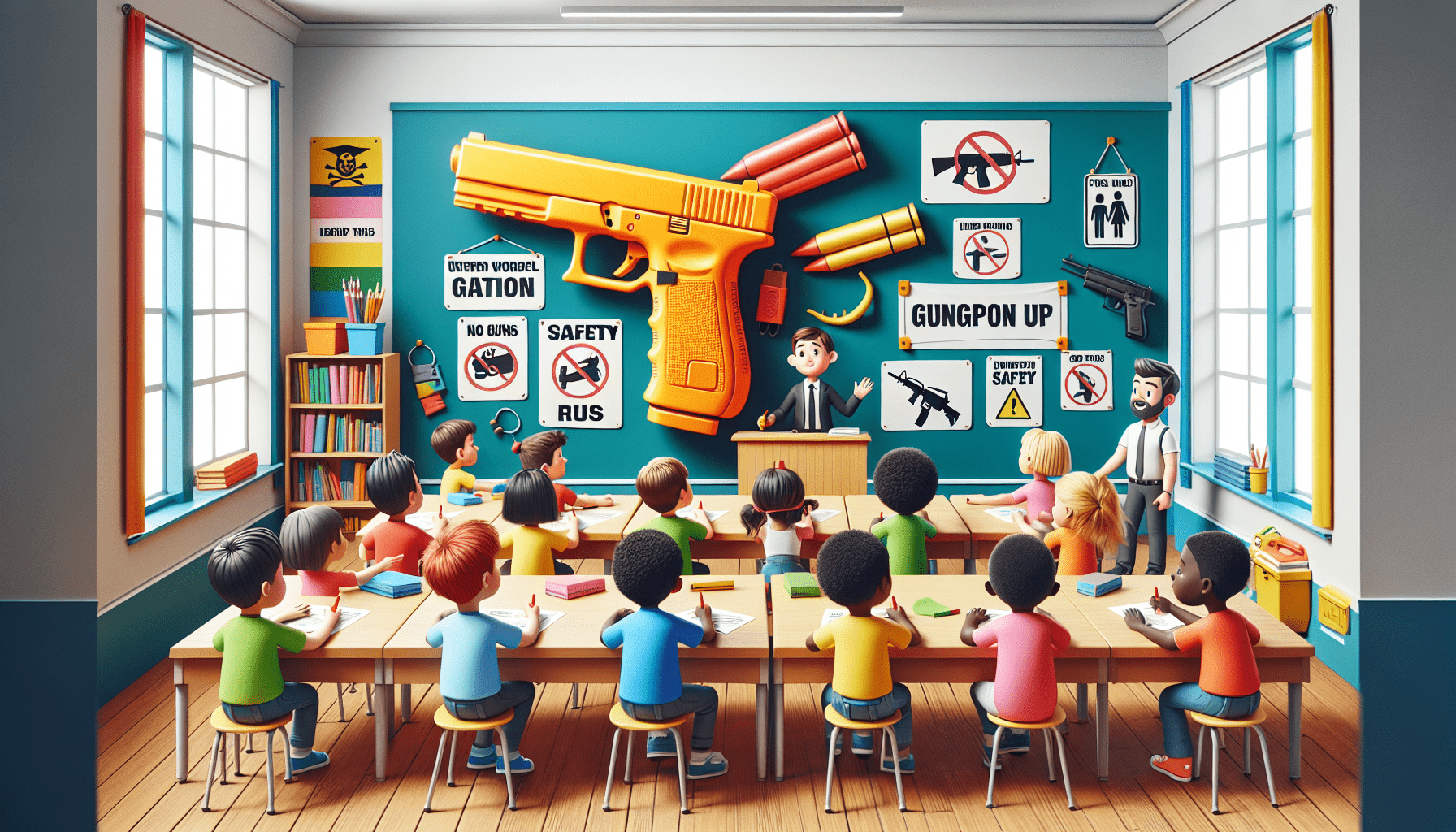Have you ever wondered how to discuss the topic of firearms with children in a safe and educational manner? Talking about firearms with youngsters can be a sensitive subject, yet it is crucial in promoting safety and responsibility. The key is to approach it with openness and understanding. In this comprehensive article, we will examine different types of firearms, and how you can engage children in learning about them responsibly. Along the way, we’ll explore ways to make this topic both informative and interesting.
Understanding the Basics of Firearms
Understanding what firearms are is the first step in discussing them with children. A firearm is essentially a tool designed to project force over a distance using a pressure-driven system, such as gunpowder. Firearms include any portable gun, be it a rifle, shotgun, or handgun.
Why Talk to Children About Firearms?
Children are naturally curious beings. The more we talk to them about a potentially dangerous subject like firearms, the more they can learn to understand and respect them. By fostering a healthy and safe environment, you ensure they know what to do when they encounter a firearm accidentally or in a controlled setting.
Introducing Firearms to Children: A Safe Approach
Teaching children about firearms must be done in a safe environment. Whether this is at home, a controlled classroom setting, or a virtual simulation at a place like Green Line Arms, the focus should be on responsibility, respect, and safety.
Educational Settings
There are different ways to introduce firearms, with one of the best environments being a learning-focused setting. Schools or community centers can hold classes where certified instructors provide age-appropriate information about firearm safety. These sessions can focus on recognizing firearms, understanding their purpose, and discussing what to do if they come across one.
Home Discussions
Having a conversation at home can be quite effective. It’s more personal, and there’s a level of comfort for the child. You can use simple language and pictures or models to support explanations.

Types of Firearms
Let’s identify and elaborate on the three primary types of firearms: rifles, shotguns, and handguns. Having a clear understanding will help children recognize the different types and know their potential uses and risks.
Rifles
Rifles are long-barreled firearms designed for precision shooting, often used in hunting and sports. They require both hands to operate and are typically more stable due to their larger size and weight.
- Key Features: Long barrel, use of both hands for aiming and stability.
- Safety Tip: Stress the importance of pointing a rifle in a safe direction at all times.
Shotguns
Shotguns are versatile firearms often used for shooting clay targets or hunting birds. They fire shells loaded with shot or slugs. While similar to rifles, shotguns are usually smooth-bored rather than rifled.
- Key Features: Known for firing multiple small pellets, ideal for moving targets.
- Safety Tip: Emphasize that one should never look down the barrel of a shotgun.
Handguns
Handguns, such as pistols and revolvers, are designed to be held in one hand. They are compact and are the most commonly encountered firearms.
- Key Features: Short barrel, can be used with one hand, often used for personal protection.
- Safety Tip: Ensure the child knows never to handle a handgun unless under strict supervision.
How Firearms Work
Understanding the operation of firearms is also essential. Each type has a different mechanism, but the fundamentals remain similar; they use pressure from expanding gases produced by burning gunpowder to propel a bullet or projectile out of the barrel.
The Firing Process
- Loading: Loading the firearm with cartridges or shells.
- Firing: Pulling the trigger releases the hammer or striker, igniting the primer.
- Ejecting: Spent cartridges are ejected from the firearm to ready the gun for the next shot.

Safety Measures for Children
While understanding firearms, the primary focus must be on safety. Teaching children to respect firearms involves making sure they know and follow these crucial guidelines:
Basic Safety Guidelines
- Never Touch Without Permission: A clear rule to establish.
- Treat Every Gun as Loaded: This helps prevent reckless handling.
- Point the Muzzle in a Safe Direction: Always be aware of where a firearm is pointing.
- Finger Off the Trigger: Until ready to shoot, fingers should be held outside the trigger guard.
Engaging Children in Firearm Safety Education
Introducing interactive ways to instill safety can be more effective than traditional lectures alone. Engaging children helps them retain information better.
Virtual Simulations
Virtual shooting ranges, like those at Green Line Arms, offer a controlled, safe environment where children can learn and engage simultaneously. They simulate conditions and sensations of using a firearm without any actual risk.
The Role of Green Line Arms
At Green Line Arms, education and safety are paramount. They offer a wide range of training programs tailored to various skill levels, including those suitable for families interested in learning together. With their advanced simulation technologies and experienced instructors, learning can be fun and effective.
Why Choose Green Line Arms?
- Safe Environment: Ensures that learning occurs away from hazards.
- Expert Knowledge: They provide trainers who are well-versed in safe firearm handling.
- Hands-On Experience Without Risk: Participants can engage with simulations to better understand mechanics involved in using a firearm.
Addressing Concerns and Questions Children May Have
Engagement means being open to questions. As children learn, they may raise concerns or curiosities about firearms. How you address these questions impacts their understanding and future safety behavior.
Common Questions
-
“Can guns go off by themselves?”
Educate children that firearms require someone to pull the trigger under normal circumstances. -
“Why do people need guns?”
Discuss the different uses, like hunting, sports, or self-defense, to provide a balanced perspective. -
“What should I do if I see a firearm?”
Reinforce the importance of not touching it and informing a responsible adult immediately.
Encouraging Ongoing Education
Learning about firearms and their safety should be an ongoing pursuit. Encouraging regular discussions and educational sessions can help reinforce the safety practices learned.
Continued Learning Opportunities
Arranging regular trips to places that offer educational experiences, like Green Line Arms, can keep interests piqued. Encourage participation in organized classes or hobby clubs where they can continue to learn and discuss safely.
Building a Responsible Future
Teaching children about firearms is more than about the knowledge of weapons; it’s about instilling a sense of responsibility, respect for dangerous tools, and an understanding of situations requiring caution.
Promoting Responsible Behavior
- Lead by Example: Demonstrating safe behavior is often the most effective teaching tool.
- Encourage Questions: Foster an environment where questioning is welcome and answers are informative.
The Importance of Familiarity and Respect
As with any topic involving potential risks, familiarity breeds comfort, and comfort can lead to complacency. Balance familiarity with respect to ensure children grow up with a healthy and responsible understanding of firearms.
Cultivating Mutual Understanding
Ensure children understand that with firearms comes responsibility; a lesson beneficial outside the specific context and into other areas of life, like interacting with strangers or handling emergencies.
Conclusion
Discussing firearms with children does not need to be daunting when done with care, clarity, and the right resources. Empowering them with knowledge and respect for safety protocols is critical. Encourage visits to specialized centers like Green Line Arms to provide controlled learning environments. By keeping safety at the forefront while embracing educational opportunities, you foster a foundation of understanding and responsibility that lasts a lifetime.
For all educational and training needs, visit Green Line Arms, where safety and learning coexist in an engaging atmosphere. Whether you are an experienced enthusiast, a beginner, or teaching the next generation, Green Line Arms is there to support and guide you through the journey of responsible firearm understanding.




